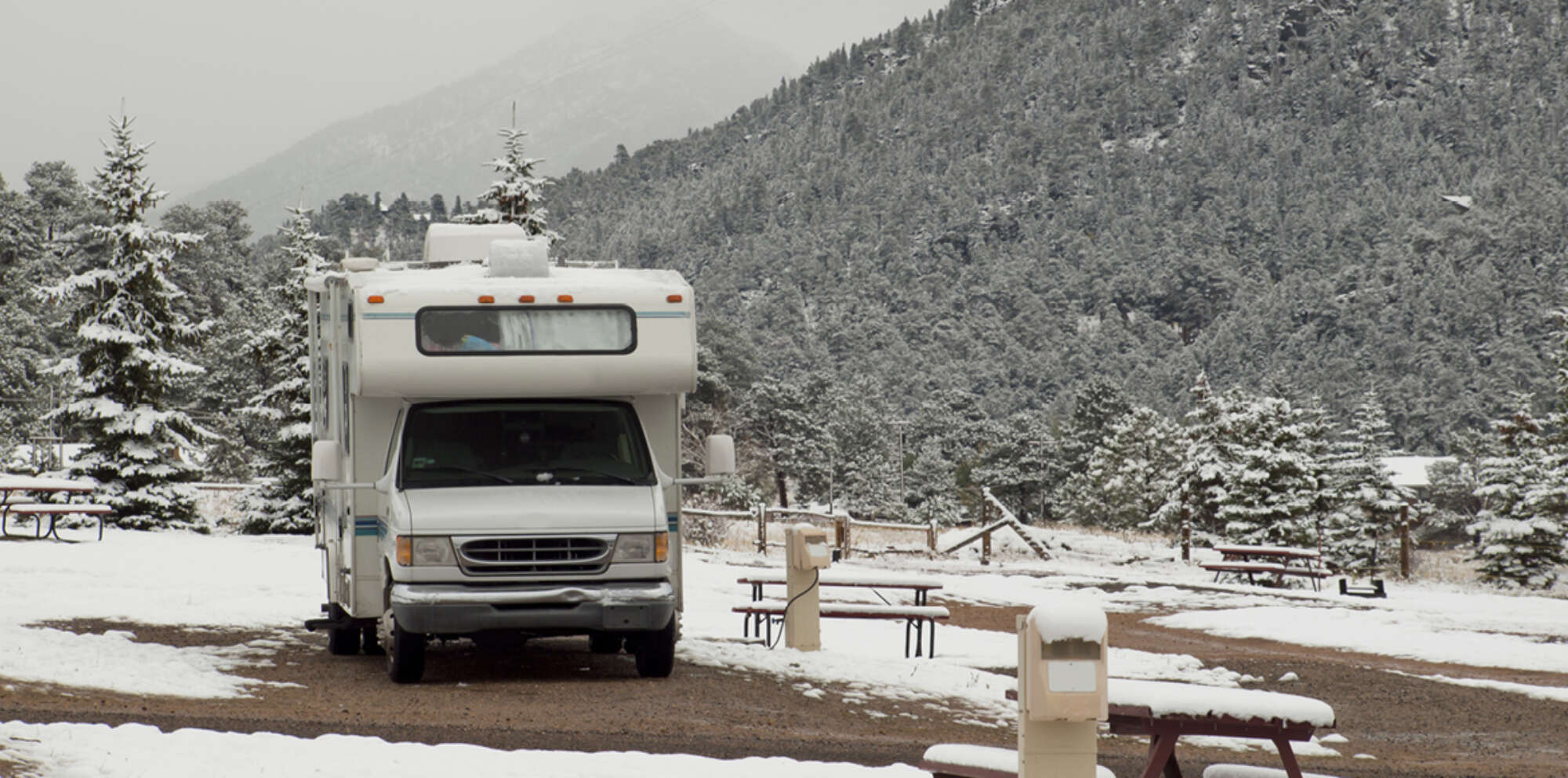https://share.hsforms.com/1V8v...‘Winterise’ is a term that’s only reeled out once a year as the weather turns and the long nights set in. But if you’re a motorhome owner seeking out the pleasures of winter holidaying, it’s something you need to become familiar with before you set out on your trip.
The UK has many fantastic winter motorhome destinations, ranging from the spectacular to the serene. Just think – while everyone else is cooped up at home watching Morecambe & Wise or Harry Potter, you could be embarking on a winter getaway, taking in the view from Scafell Pike, mountain biking in Northumbria or exploring the Malvern Hills.
However, to make your holiday go smoothly, you need to winterise your vehicle ready for the cold conditions. In fact, even if you’re intending to put your motorhome into hibernation until the spring there are still several steps you must take to ensure that it’s protected against the elements.
Ready for a winter retreat?
Before you set off, top up your windscreen wash ready for the sub-zero temperatures, and check that your vehicle’s radiator anti-freeze content was included in your most recent service. Equip the motorhome with propane gas cylinders or Autogas, rather than butane, which isn’t suitable for use in the cold, and check the external air intakes and waste gas vents in your heaters and hot water boiler to make sure they aren’t blocked, repeating this exercise if there’s any snow.
Make sure you have a tank heater serving both fresh and waste tanks – so that water is always kept flowing – and, if the tank is external, both tank and heater will need extra insulation, as will any exposed pipes.
Also, ask any motoring organisation about driving in the winter and they’ll advise equipping your motorhome with winter tyres to provide a better grip in colder temperatures. In the UK, this is down to your own judgement, and some owners opt for four-season tyres as a compromise, but if you’re involved in an accident, your liability may be affected. It is the drivers’ responsibility to ensure that that their motorhome is roadworthy. As an example, most tyre manufacturers strongly recommend that winter and summer tyres are fitted separately. Where winter tyres have been fitted in accordance with manufacturer’s specifications and are roadworthy most insurers do not require policyholders to inform their insurer.
Cosy campers
No one wants to return from a chilly winter stroll only to catch a cold once they step into their motorhome, so it’s good news that most motorhome heaters can now be upgraded to smartphone-based control systems. Turn on the heating when you’re half an hour from home and your remote residency will be appropriately toasty on your return.
Of course, heating systems work far better if the motorhome is well-insulated, so consider investing insulation for the cab windows and wheel arches, along with mats for the rooflights and carpets for the floors. Good insultation also protects against condensation, which can be a problem if there’s a cooking and washing aplenty going on inside. But remember that while heat and comfort are important, these should never come at the expense of the motorhome’s ventilation.
Motorhome hibernation
If you’re not intending to use your vehicle this winter, now’s the time to start preparing for its impending downtime. This means getting the basics out of the way, such as cleaning out any food that might attract vermin, or spraying silicone oil onto locker hinges to prevent rusting.
Filling the fuel tank may sound counter-intuitive if you’re not going anywhere, but this helps to avoid condensation in the tank. However, a full tank can cause complications if left for too long so it’s best to get a fuel stabilizer to be safe. You’ll also need to think about how to protect the bodywork from the elements, mould and algae. A breathable cover, or a protective waxy coating, are both good options.
For a full list of winterising considerations, visit Out & About Live and work your way through their useful checklist before you finally lock the motorhome door.
Safe, secure and insured
Sadly, motorhome theft doesn’t drop off in line with the temperature, so for long periods of inactivity it’s a good idea to put your vehicle in a secure site rather than leaving it in your driveway or outside your house. Organisations such as CaSSOA have hundreds of sites nationwide. They’re graded Gold, Silver and Bronze depending on their provisions, but from an insurance perspective, simply using a trusted storage provider in the first place makes a big difference.
With growing numbers of first-time motorhome owners, not everyone knows that such sites exist, so if you’re a broker with new motorhome clients, make sure you spread the word and highlight the advantages of external storage.
Of course, owners mustn’t forget about their motorhome during the winter, wherever it’s being stored. Taking the vehicle out for a run from time to time will help charge the batteries and prevent mechanical issues come the summer. Most storage sites allow for this on an impromptu basis, but you should always check beforehand in case they want you to make an appointment.
Finally, whether you’re heading on holiday or putting your motorhome in storage, make sure you have appropriate insurance. Motorhomes are subject to exacting DVLA definitions and licensing requirements – securing the right cover isn’t always easy, which is why our team of specialist Enthusiast underwriters will be on hand all winter to support brokers and their motorhome customers’ needs.
Click here for more information on our Motorhome.
For speedy access to Motorhome quotes, sign up to eTrade. Already registered? Login to eTrade.
If you’re looking for a quote where the vehicle value is >£50k and/or in a company name, email motorhomequotes@ers.com or call 0345 600 3890.






